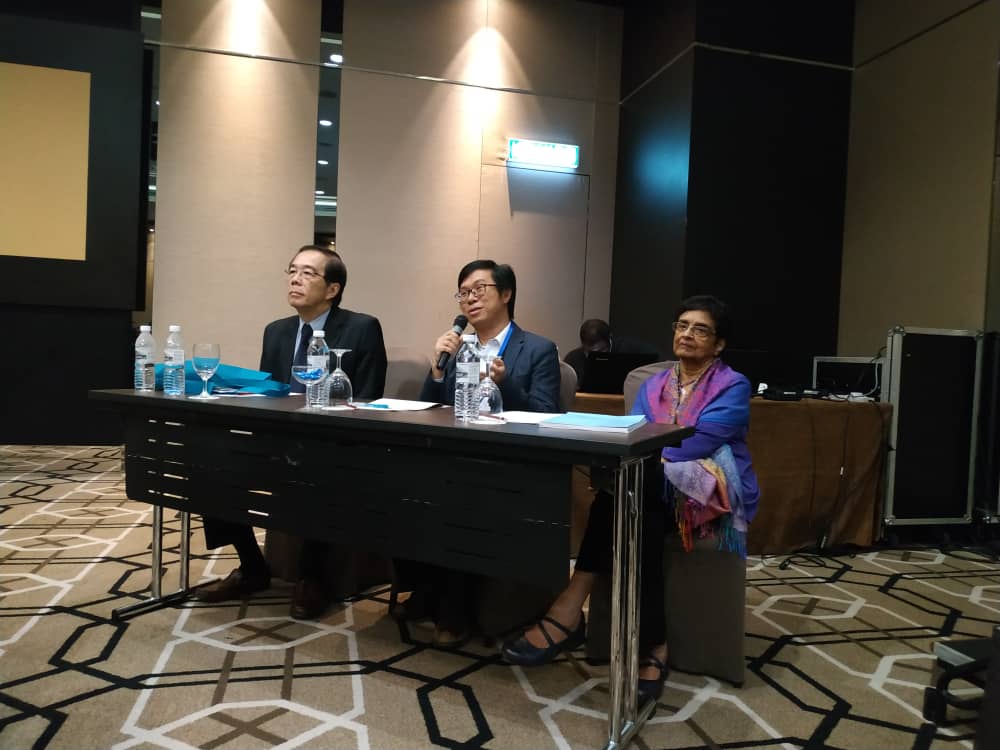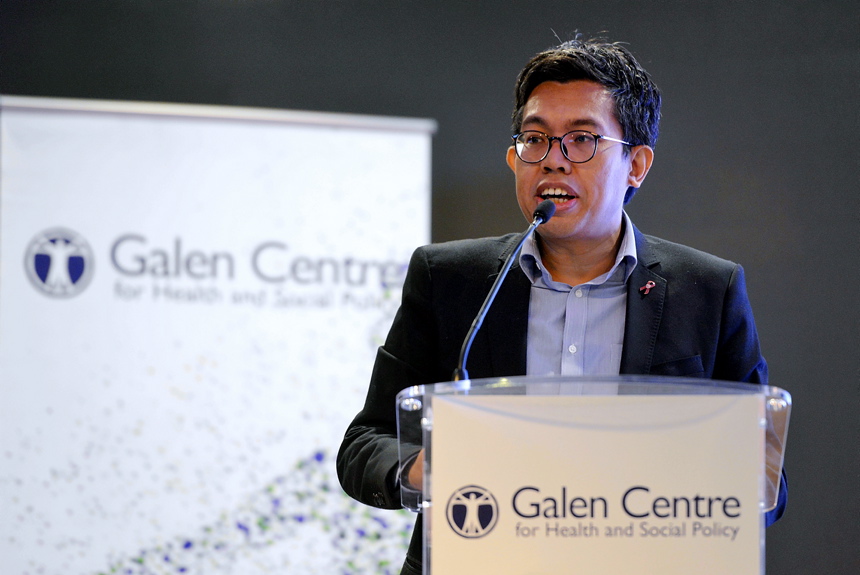KUALA LUMPUR, Oct 11 — Analysts project an increase of up to 8 per cent in the government’s health allocation under Budget 2020, estimated to be RM31 billion, amid medical inflation.
Prof Kenneth Lee and June Choon Wai Yee, pharmacy professor and lecturer respectively at Monash University’s School of Pharmacy, said public spending on health care in Malaysia should reach 4.6 per cent to 4.8 per cent of the gross domestic product (GDP) by 2020, up from the current 2.3 per cent, to fit the country’s status as an upper middle-income economy.
“Demand for better services is always on the rise. We would expect a 5 to 8 per cent increase in the overall budget in 2020,” Lee and Choon told CodeBlue in a joint statement, ahead of the tabling of the federal government’s Budget 2020 later today.
The two also cited inflation in health care costs as a factor. Malaysia is the only country in Southeast Asia and the only other country in Asia Pacific (besides Pakistan) that is projected to experience double-digit medical inflation this year, hitting 13.6 per cent compared to 12.4 per cent in 2018, according to Aon’s 2019 Global Medical Trend Rates Report.
The Ministry of Health (MOH) received about RM29 billion in the previous government budget, a 7.8 per cent increase from the RM27 billion allocation under Budget 2018. Malaysia currently only spends 4.5 per cent of its GDP on health, comprising 2.3 per cent and 2.2 per cent from the public and private sectors respectively. The recommended spending for an upper middle income country like Malaysia is between 6 and 6.5 per cent of the GDP, ideally 7 per cent.
Lee and Choon urged the government to allocate more resources to new innovative health care services, including medicines, that are supported by scientific evidence.
“New pharmaceuticals are invariably more effective. They may be more expensive initially but can usually lead to cost savings in the long run,” they said.

Independent analyst Lim Chee Han similarly predicted a bigger MOH allocation for next year.
“If we follow last year’s growth rate trend, we should expect an allocation close to RM31 billion, or an increase of RM2.3 billion. If more optimistic, we could see perhaps RM0.5-RM1.0 billion further addition,” Lim told CodeBlue.
“The first major disappointment about the Budget 2019 is that they did not intend to keep the manifesto promise to raise the health budget towards 4 per cent GDP.
Lim Chee Han, independent analyst
“They follow the historical trend, which means the insufficiency of funding will remain for some areas,” Lim said.
The health analyst highlighted the consequences of shortfalls in the government’s developmental budget, citing the 2016 fire at Sultanah Aminah Hospital in Johor that killed six patients.
“It was a tragedy that the government needs to remind themselves of the importance of maintenance and upgrading the facilities.”
Lim also cited complaints on social media about dilapidated underfunded public health clinics in rural Sabah.
“So, the government needs to increase the capacity of their facilities to accommodate/serve more patients or redistribute the patient load by building more urban hospitals, or upgrade or fully utilise the current district (non-specialist) hospitals.”
Additional funds, Lim said, should be used to upgrade hospital facilities, to build an electronic medical record (EMR) system, to enhance preventive care, and to use appropriate funding to cover the entire Malaysian population aged 40 and above under MOH’s Peka B40 health screening programme.
“This is because non-communicable diseases do not recognise socioeconomic status, whether one is from M40 (middle 40 per cent) or T20 (top 20 per cent). General awareness of health screening in this country is still very low.”
The Peka B40 programme has only hit about 13 per cent, or 100,000 of this year’s target of 800,000 people from the bottom 40 per cent (B40) so far, Deputy Health Minister Dr Lee Boon Chye said recently, according to Bernama.
Lim noted that the finance minister has pledged to build a wider social safety net and manage the cost of living.
“I hope that he really keeps his words and put the money where the mouth is. It is all about putting the priorities in the right place,” the analyst said, as he reminded Lim Guan Eng about the United Nations’ sustainable development goals (SDGs) motto of leaving no one behind.
“Whether this coming health budget meets the rakyat’s health(care) demand, I hope that not many people are being left behind as a consequence of shortfalls.”

Dr Khor Swee Kheng, a physician and specialist in health systems and policy, proposed a predictable mechanism of allocating 10 per cent of Malaysia’s annual federal budget to MOH to ensure multi-year reform and planning.
“Using this mechanism, and some simple projections, the MOH allocation will rise from RM28.7 billion in 2019 (9.1 per cent of total federal budget of RM317 billion) to RM33.0 billion in 2020 (10 per cent of total federal budget, and guaranteed every year thereafter).
“This is an absolute increase of RM4.3 billion and relative increase of 15 per cent, which must be managed carefully. I have previously proposed stewardship and ideas. A more dramatic increase could also be irresponsible, as it will require more government debt at a time when we’re already borrowing heavily even to service previous debts,” Dr Khor told CodeBlue.
He said health allocations should have a long-term focus with an eye on multi-year reform.
“For example, a coordinating unit within the MOH can be created to project-manage the reform, and we must lay the foundations for old age care and incentives for insurance,” the analyst said.
“Two, the health allocations should focus on primary and preventive care, and public health.”
“We can be tempted to allocate more money into curative services (already 70 per cent of all health spending, versus 7 per cent for preventive), but must resist that temptation in favour of the long-term benefits of primary care and public health.”
Dr Khor Swee Kheng, specialist in health systems and policy
“Three, the health allocations should expand the health debate in Malaysia from ‘how much money to spend’, to include ‘what are we getting for that money’. This means that we must emancipate the National Institutes of Health and gradually implement performance metrics for front-line practitioners and also administrators,” Dr Khor said.

Galen Centre for Health and Social Policy CEO Azrul Mohd Khalib predicted a more modest increase of 5 per cent in MOH’s allocation under Budget 2020 as the best-case scenario.
“However, we are fully aware that the 2019 allocation was the most ever received and the highest percentage of increase in the past decade. Maintaining it at the correct level would also be an optimistic projection,” Azrul told CodeBlue.
When asked what the health funding should be spent on next year, he said the government should strengthen programmes for the prevention and control of non-communicable diseases (NCDs).
“Any new funding should be channeled into dealing with and responding to cancer, diabetes and the consequences of obesity. We hope that even if the allocation does not increase, the government could instead reallocate resources to increase prioritisation and investments in preventive health.”








